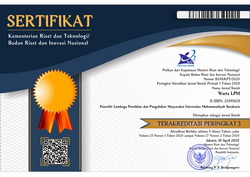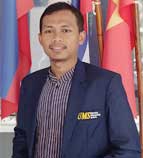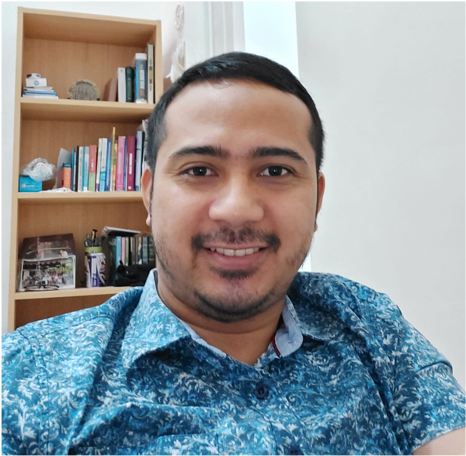Upaya Peningkatan Pengetahuan Penyakit Demam Berdarah Dengue Masyarakat Desa Jelobo Kabupaten Klaten
DOI:
https://doi.org/10.23917/warta.v26i1.1583Keywords:
Attitude, Dengue Hemorrhagic Fever, KnowledgeAbstract
Dengue hemorrhagic fever (DHF) is still a serious problem in Indonesia, because the climate in Indonesia supports mosquito breeding and most Indonesians are still not aware of the importance of clean and healthy living behavior which causes many cities in Indonesia to become endemic cases of DHF. This service is carried out in Jelobo Village, Wonosari District, Klaten Regency, which is included in a DHF endemic area. The morbidity rate reaches 1.71 per 100,000 population and the mortality rate reaches 5% which is included in the 3rd rank of death in the Central Java area. Based on the results of the situation analysis and survey, it shows that the people of Jelobo Village still have less knowledge and attitudes in preventing DHF. The purpose of community service is to increase the knowledge of the Jelobo Village community regarding the understanding, symptoms, causes, and prevention of dengue fever. The method used is by providing online counseling in the form of digital posters and videos distributed through Whatsapp Groups as a preventive and promotive effort to prevent dengue. In addition to using posters and videos that are distributed on Whatsapp Groups, education is also carried out by placing posters in public places. Wilcoxon statistical test obtained p value of 0.00 <0.05, meaning that there is a significant effect on the difference in the treatment given to each variable. A significant difference can also be seen from the results of an increase in the pre-test and post-test of 6.178, so that the treatment given after the pre-test showed an increase in participants' knowledge of DHF disease. Increasing public knowledge will open awareness to create good environmental sanitation so that the chain of disease transmission can be broken. It is necessary to collaborate with health workers, the community, and local village cadres to improve education in the community, especially regarding DHF.
References
Baitipur, L. N. (2018). Pendidikan Kesehatan Melalui Video Untuk Meningkatkan Pengetahuan Dan Praktik Psn Dbd. JHE (Journal of Health Education), 3(2), 86–90. https://doi.org/10.15294/jhe.v3i2.17444
Effendi, S. U., Shaluhiyah, Z., & Widagdo, L. (2018). Persepsi Masyarakat Tentang Isi Media Promosi Kesehatan Demam Berdarah Dengue ( DBD ) di Kota Bengkulu. Higiene, 4(2), 99–108.
Firawan, Wiskha Dany and , HM. Abi Muhlisin, SKM, M.Ke p and , Kartinah, A.Kep, S.Kep. (2013). Pengaruh Pendidikan Kesehatan Terhadap Perubahan Tingkat Pengetahuan Dan Sikap Masyarakat Tentang Demam Berdarah Dengue Di Desa Trosono Kabupaten Magetan. Skripsi thesis, Universitas Muhammadiyah Surakarta.
Kemenkes RI. (2016). Infodatin: situasi DBD di Indonesia. Kementerian Kesehatan RI.Jakarta
Kunoli, J. F. (2012). Asuhan Keperawatan Penyakit Tropis. Jakarta: CV. Trans Info Media
Nasution, S., Sadono, D., & Wibowo, C. T. (2018). Penyuluhan Kesehatan untuk Pencegahan dan Risiko Penyakit DBD dalam Manga dan Infografis. Jurnal Penyuluhan, 14(1).
Nazri, C., Hashim, A., Rodziah, I., & Hassan, A. Y.(2013). Utilization of geoinformation tools for dengue control management strategy: a case study in Seberang Prai, Penang Malaysia. International Journal of Remote Sensing Applications, 3(1), 11–17.
Notoatmodjo, S. (2010). Ilmu Perilaku Kesehatan. Jakarta : PT Rineka Cipta
Pongsilurang, C. M., Sapulete, M. R., & Kaunang, W. P. J. (2015). Pemetaan kasus demam berdarah dengue di Kota Manado. Jurnal Kedokteran Komunitas dan Tropik, 3(2), 66– 72.kemenkes. Data dan Informasi, Profil Kesehatan Indonesia. Jakarta; 2017.
Putranto, A. Y., Fitriangga, A., & Liana, D. F. (2012). Promosi Kesehatan Dengan Metode Peer Education Terhadap Pengetahuan Demam Berdarah Dengue ( DBD ) Siswa SMA. Jurnal Vokasi Kesehatan, 1–6.
Sofia, Suhartono, N. E. W. (2014). Hubungan Kondisi Lingkungan Rumah dan Perilaku Keluarga dengan Kejadian Demam Berdarah Dengue Di Kabupaten Aceh Besar The Relationship of Home Environmental Conditions and Family Behavior with Genesis Dengue In Aceh Besar. Kesehatan Lingkungan Indonesia, 13(1), 30–37.
Suhadi. (2020). Promosi Kesehatan Berbasis Daring Mengenai Perilaku Pencegahan COVID-19 Bagi Masyarakat Kota Kendari. Jurnal Pengabdian Masyarakat. Vol (1),No 3. hal 245-255.
Tanjung, M. (2012). Perilaku Kader Jumantik Dalam Melaksanakan Psn Dbd 3M Plus Di Kelurahan Jomblang Kecamatan Candisari. Jurnal Kesehatan Masyarakat Universitas Diponegoro, 1(2), 18697.
Yana, Y., & Rahayu, S. R. (2017). Analisis Spasial Faktor Lingkungan dan Distribusi Kasus Demam Berdarah Dengue. HIGEIA (Journal of Public Health Research and Development), 1(3), 106-116.
Yulianti, Indah. (2013). Booklet Untuk Meningkatkan Pengetahuan Pemberantasan Sarang Nyamuk (PSN) Demam Berdarah Dengue (DBD) Di Desa Plumbungan Kecamatan Karang Malang Kabupaten Sragen. UJPH (Unnes Journal of Public Health), 2(2).
















